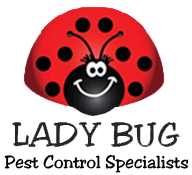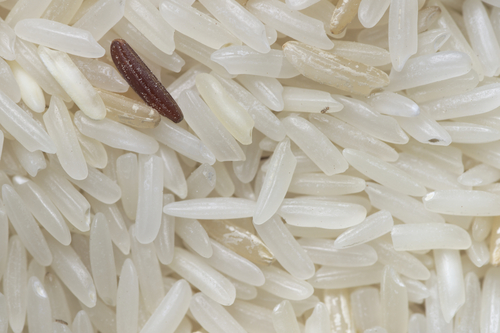|
Often, an insect is called a weevil but is not a true weevil. It does not have a snout and it lays its eggs on the outside of the bean rather than inside. The name of this imposter is the bean weevil. Bean weevils are active fliers, and easily find their way into structures where the appropriate foods are stored for their offspring to feed on, and these are dried legumes of various kinds – black-eyed peas, horse beans, and other dried beans and peas. Knowing this strong tendency for the bean weevils to infest a certain kind of stored food is helpful once you properly identify the beetle, for it narrows your search for the source. The true weevils have an elongated snout with the tiny mandibles right at the tip. The seed weevils do not have a long “snout”, but their head and prothorax are elongated so that they stick out in front of the rest of the body, almost resembling a short snout. One very good identification character you can look for is the top of the abdomen. True weevils have fully developed wing covers (elytra) that extend all the way to the end of the abdomen. There are many different kinds of seed weevils, and their role in Nature is clear. They are responsible for feeding on the dried seeds of plants as part of the overall recycling program in nature. Some species may specialize in acorns, and when homes are surrounded by oak trees the beetles may be present in abundance. Decorative items using seeds may be present in a home and these would need to be inspected when weevils are present. Back in the 1970’s one decorating craze was the use of glass-topped “shadow” boxes that had many small compartments in them. These were filled with a variety of colorful items and hung on the wall, and often the colorful items were colored popcorn, different colors of dried beans, dried macaroni and other pastas, and all of these things eventually would be found by different insects that fed on them and then scattered around the home. The life cycle of the seed weevil from egg to adult is completed in about one month and adults live only two to three weeks. Their role in nature really is to mate, lay eggs, and die once this production of the next generation is completed. At Lady Bug use a variety of environmentally responsible products to control pest activity. The ECO line of products we use are all EPA approved and are made from clove oil, guava fruit, rosemary and other organic products and naturally occurring materials. They are very effective against pests when injected into the cracks and crevices at the source of where pests live and breed, yet it is inaccessible to people and pets. The Weevils Mesa, AZ Contact Lady Bug Pest Control Specialists for a Free Home Inspection for Termites, Eco-Friendly Pest Control, Home Seal Service, Bed Bug Eco-Heat, and Rodent Control. We perform Complete Home Inspections at no charge. Please feel free to contact Lady Bug Pest Control Specialists to answer any questions or for a FREE Inspection. 480-833-1111 |
||
|
|




 When one thinks of weevils
When one thinks of weevils 



